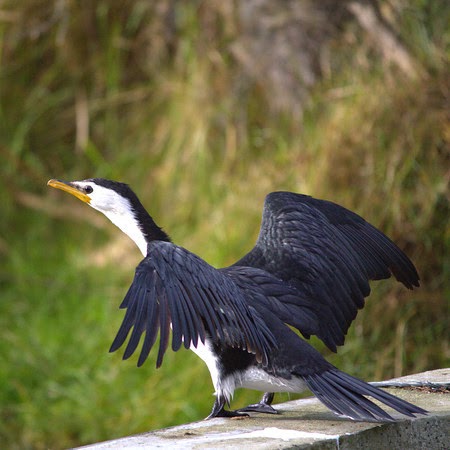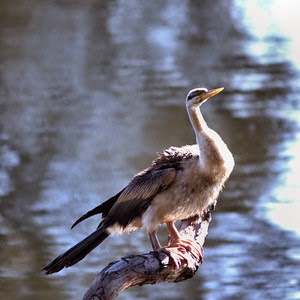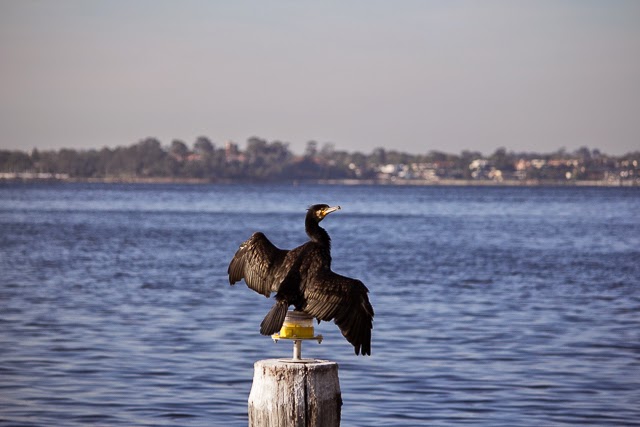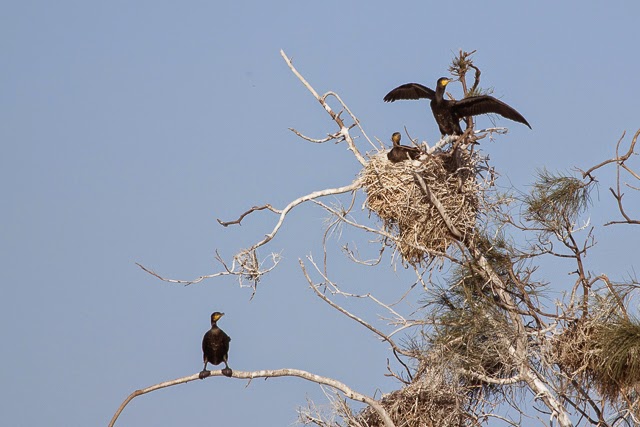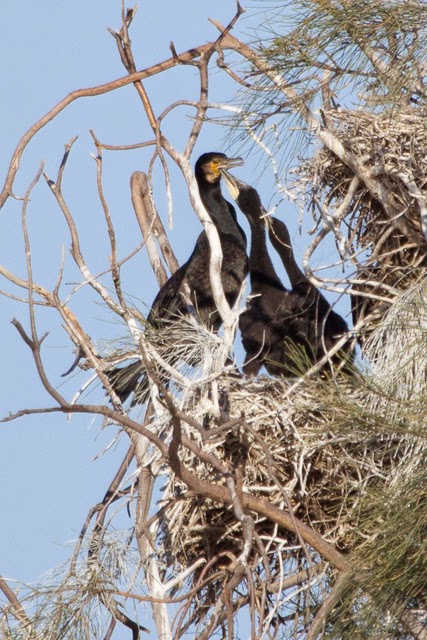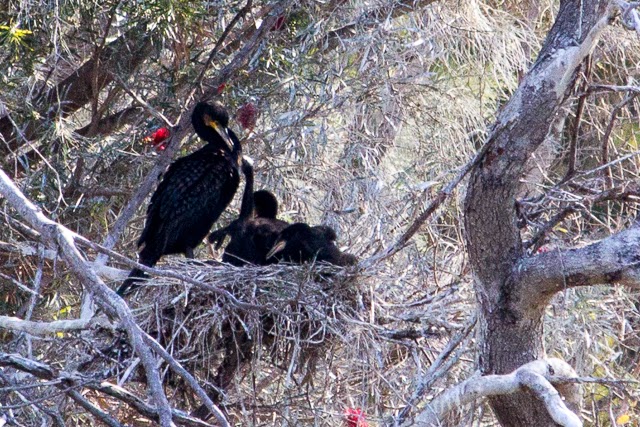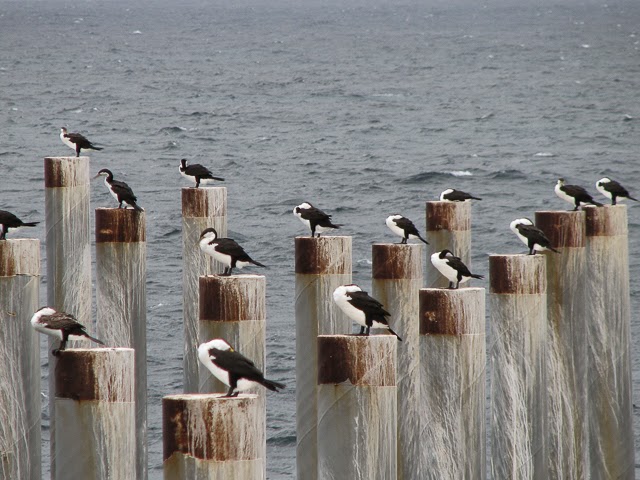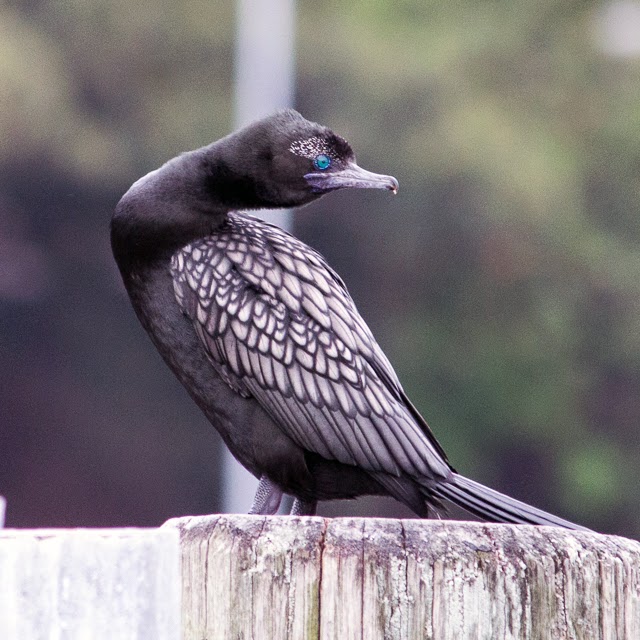Cormorants and Darters
I think of cormorants as the philosophers of the bird world. I know a lot of people would defer to owls, but there is something of the old greek fisherman about a cormorant. They go out in the morning and get their fishing done, then head to shore, hang their wings out to dry and contemplate the world. For me, that is philosophy at its finest.
Although I have never come across the eggs of a cormorant or a roaming bear with a penchant for baked goods, I do have very fond memories of the Christopher Isherwood poem (although my memory had mistakenly attributed it to either Edward Lear or Spike Milligan).
Perhaps without philosophy we would never have had nonsense, or vice versa, or both? – That may be inherent contradiction so I’ll stop before my brain explodes, or I cause a paradox and cease to exist or something equally inconvenient. The poem, faulty as it is taxonomically, goes like this;

The common cormorant (or shag)
Lays eggs inside a paper bag,
You follow the idea, no doubt?
It’s to keep the lightning out.
But what these unobservant birds
Have never thought of, is that herds
Of wandering bears might come with buns
And steal the bags to hold the crumbs.
Christopher Isherwood
In any case, in WA we have a variety of species of cormorant, none of which have any interest in either paper bags or bears. I don’t know where we rate on a world scale in terms of lightening, but clearly it isn’t too much of an issue for our birds.
I have a couple of favourites that I pass daily on my bike ride to or from work. I wonder if they take notice of particular cyclists or if we all look the same to them? They are such creatures of habit I worry a little if I see that one isn’t there.
Little Pied Cormorant (Microcarbo melanoleucos)
This cute little guy was hanging out (literally) at Herdsman Lake while I was there. I think he is a juvenile little pied cormorant – he has no yellow beside his eye and has the yellow bill, but that black patch on his leg(flank) does mean he could be a stock standard pied cormorant.
Australasian Darter
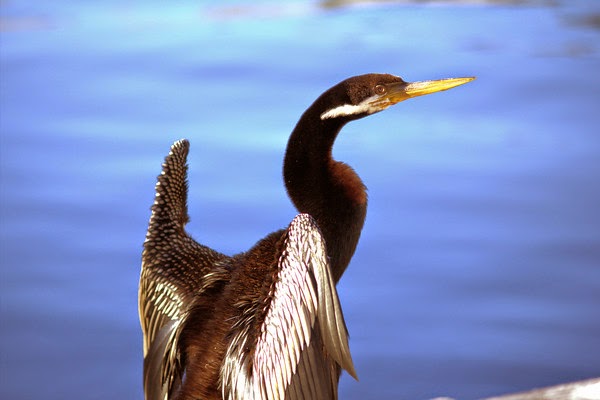
From what I’ve read the spotters difference between a cormorant and a darter is that a darter has a straight (stiletto) bill, while the cormorants bill is hooked at the end like a pelican’s.
I’m not certain if this is a female or a Juvenile (or both I suppose).
Either way I hope it was a nice afternoon’s fishing on the Swan up by Guilford.
This beautiful boy was sunning himself on a winters morning at Claisebrook inlet. He was very patient with me sticking my camera in his face. I love the way the feathers on his rear end look fluffy – more like fur that feathers. The way the sun was shining off his wings he looks like he had been embossed with silver.
Great Cormorant (Phalacrocorax carbo)
The bird bird of the cormorant world, in Australia at least, is the Great Cormorant. They can frequently be seen fishing, or hanging out the laundry, on the banks of the Swan River.
Like Ibis, the Great Cormorant breed in colonies. This lot have made themselves at home in Maylands. They take an equal opportunity approach to family duties, with both parents taking part in nest building, incubation and care of the resulting (and somewhat demanding) young.
Pied Cormorant
Not the best photo to show the differences between the Little Pied and the Pied Cormorant, but if you look really really closely you’ll see these birds have a longer bill, orange cheek patches, and the black stripe down their legs.
They are also much larger, but without a point of comparison it’s tricky to see that here.
Little Black Cormorant
More information
Family: Phalacrocoracidae
http://birdlife.org.au/bird-profile/australasian-darter
http://birdlife.org.au/bird-profile/little-pied-cormorant
http://birdlife.org.au/bird-profile/great-cormorant
http://birdlife.org.au/bird-profile/pied-cormorant
http://birdlife.org.au/bird-profile/little-black-cormorant
